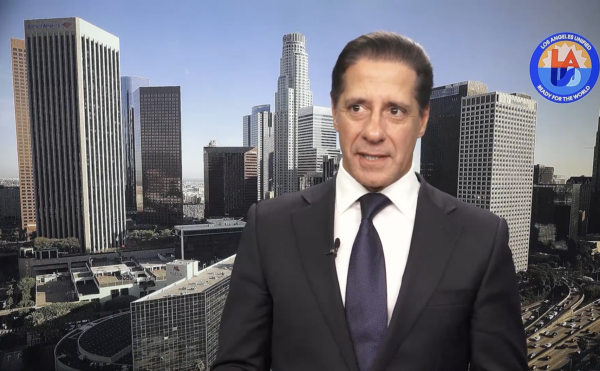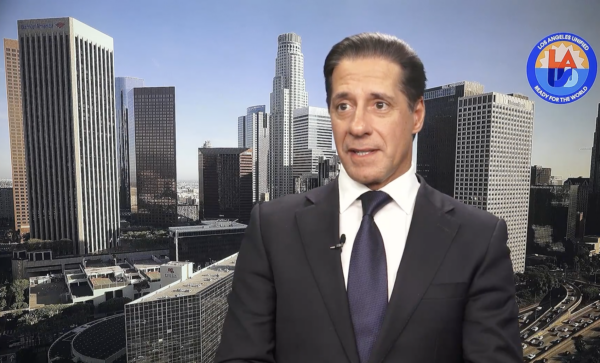Key points:
Alberto Carvalho leads the Los Angeles Unified School District (LAUSD)–the nation’s second-largest district. Carvalho, whose strategic plan for the district aims to revolutionize teaching and learning, recently announced an innovative AI-fueled learning acceleration platform named Ed.
Recently, I caught up with Carvalho at the AESA Conference in Anaheim, CA, to hear what’s on his agenda and how he’s transforming learning at LAUSD.
Can you describe your role as the superintendent of Los Angeles Unified and the unique challenges your district faces?
Los Angeles Unified is the second-largest district in the U.S., comprising over 540,000 students; when you include adult learners, we’re close to 600,000. Being an independent school district detached from mayoral supervision, we proudly hold the title of the largest in America. Operating in the largest county nationwide, we face challenges unique to our vast student population, including issues of poverty, homelessness, and foster care conditions. It is a system with severe challenges, but boundless opportunities as well. And what I do know is that effective leadership builds teams that find practicable solutions.
Could you share how education transformed your life, and how that experience shapes your vision for every child in America?
I was once a homeless teenager on the streets of Miami, and education saved and defined me. I reject the notion that children are broken; the systems around them hinder their dreams. For me, it took Miss Natalia, my teacher from first grade to fourth grade. She was the perfect teacher. And the perfect teacher is not the teacher that has multiple master’s degrees and doctorate degrees. The perfect teacher is the one who looks you in the eye and touches your heart before impacting your mind.

Your Birth Through Age 14 (B14) concept is intriguing. Can you delve into how it is revolutionizing the educational journey, starting from infancy to post-high school experiences?
The B14 concept spans from birth to year 14, as I am dissatisfied with traditional K-12 constraints. We envision newborns receiving LAUSD care packages in hospitals, extending beyond early years to experiences two years past high school. The B14 initiative empowers both parents and children by prioritizing early education for parents and breaking generational literacy barriers. Our transformative investment in universal transitional kindergarten demonstrates commitment, reaching 10,000 additional students in a single year. The journey extends beyond high school, emphasizing post-secondary training aligned with real-world workforce needs.

Your vision for the future of education is exciting. How do you see AI and big data shaping personalized learning experiences?
AI and big data play a pivotal role in the tech-savvy world spurred by the pandemic. I envision B14 environments turning into data-rich hubs, creating personalized learning experiences. We make every student the classroom. This interconnected ecosystem fosters engagement through surveys, incentives, and timely reminders. Parents stay connected, receiving nudges and reminders, fostering collaboration. Daily data uploads recreate personalized environments, addressing issues like absences and proactively engaging with attendance counselors.

What is your plan to improve student achievement?
If there was ever a pressure on America, it is to actually accelerate kids to where they need to be. At the same time, if there was ever a pitfall, it’s one that recognizes or assumes that simply taking kids in terms of achievement–in terms of proficiency in reading and mathematics–simply taking them back to a pre-pandemic level, is sufficient. Then we claim success. No. That’s ignoring the fact that systemic generational achievement gaps existed pre-pandemic. We know what works in education–we need to change to make it work. Carvalho addresses the pressing concern of making changes to the education system to align it with what we know works.

How do you envision addressing school safety in America?
School safety is a pressing concern, and we need immediate action. I advocate for a comprehensive approach, blending political solutions and technological advancements. The socialization effect, focusing on fostering supportive environments, is cost-effective. Initiatives like improved counselor ratios, enhanced peer counseling, and open parent dialogues are crucial. While acknowledging the complexity, technology has potential. It’s about the will and skill to implement effective solutions. We need a united effort to create safer schools for the well-being of our children.



